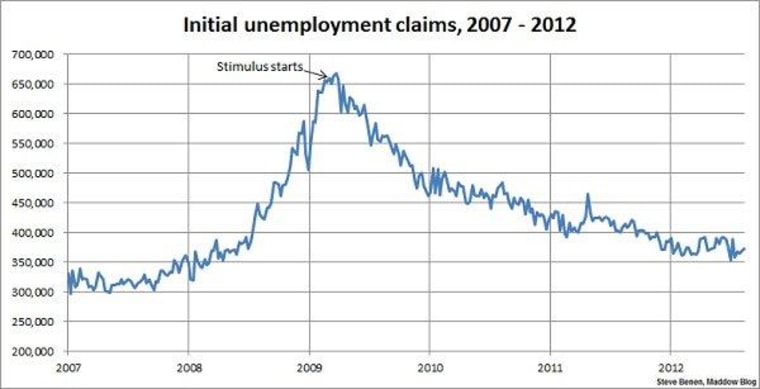Though initial unemployment claims started to look more encouraging in late July, they're slowly starting to move in the wrong direction again. The new report from the Department of Labor showed the total inching higher for the second week in a row.
Applications for U.S. jobless benefits rose by 4,000 to a seasonally adjusted 372,000 in the week ended Aug. 18, the Labor Department said Thursday. Economists surveyed by MarketWatch had projected claims would rise to 369,000. Initial claims from two weeks ago were revised up to 368,000 from an original reading of 366,000, based on more complete data collected at the state level. The average of new claims over the past month, meanwhile, climbed by 3,750 to 368,000. The four-week average reduces seasonal volatility in the weekly data and is seen as a more accurate barometer of labor-market trends.
To reiterate the point I make every Thursday morning, it's worth remembering that week-to-week results can vary widely, and it's best not to read too much significance into any one report.
In terms of metrics, when jobless claims fall below the 400,000 threshold, it's considered evidence of an improving jobs landscape, and when the number drops below 370,000, it suggests jobs are being created rather quickly. We've only managed to dip below the 370,000 threshold six times in the last 20 weeks, though we have been below 370,000 in five of the last seven weeks.
And with that, here's the chart showing weekly, initial unemployment claims going back to the beginning of 2007. (Remember, unlike the monthly jobs chart, a lower number is good news.) For context, I've added an arrow to show the point at which President Obama's Recovery Act began spending money.
